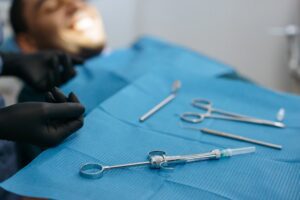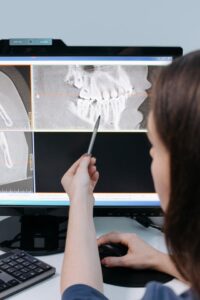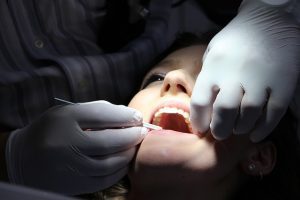Modern US dental and oral surgery technology is advanced – from holistic dental implants to bone and soft tissue grafting, we have medical, homeopathic and surgical solutions for everything. Not to mention best practices for dental hygiene tend to prevent most-to-all maladies of the mouth.
As this is our reality, we tend to assume a picture of ancient peoples as having missing, decayed and broken teeth by the time they reach adulthood. But was it really like that?
(Hint: It wasn’t.)
From ancient China to Egypt, Europe, and South America, many cultures had their own best practices for dental hygiene, oral health and dental surgery. And in some cases, it worked pretty well. A population we know a lot about is the Romans. Roman material culture abounds all over Europe, but especially in Rome proper – in South Italy.
Valuing a Healthy Smile isn’t a Modern Phenomena
Romans, like Americans today, highly valued a healthy smile. Legal text from 450 BCE lays out penalties for anyone who knocks another person’s tooth out – and this law was actually inherited from a much older, Near Eastern legal code. Then, around 0 CE, Celsus recommended that everyone wash their mouths each morning.
In the later stages of the Roman Empire, people with toothaches actually got their own saint – a martyr by the name of Apollonia. In legend, “they broke her teeth and threatened to burn her.” And as she burned, she called out to people who had toothaches and promised that if they invoked her name she would relieve their pain.
Suffice to say – teeth were as important to people 2000 years ago as they are today. But how? Certainly invoking a dead person’s name isn’t enough. What else did the Romans know?
What We Know About the Romans’ Dental Technology
Romans brushed their teeth daily. Sound familiar? The tools were a little different, though – they used frayed sticks and rough pastes made of ground eggshells, hooves, seashells, pumice, and ash.
They also had another familiar daily dental habit: using mouthwash. Their mouthwash was simply human urine, which sounds nasty, but works the same way as our minty anti-microbial mouthwashes today, as urine contains bacteria-killing ammonia.
Romans also regularly performed tooth extractions, and made dentures of bone and ivory. Celsus also wrote about tooth fillings made of lead and cotton fibers. The Etruscans, who ran South Italy prior to the Romans, had more advanced technology for dental bridges, and they had dental implants. The Romans must not have gotten those memos…
One of the most useful archaeological sites in the world – for a lot of things besides dental tech – is the Roman port city of Pompeii. You know – since everyone was covered and encase in volcanic ash forever after Vesuvius erupted. Remains from Pompeii can tell us exactly what people’s teeth were like nearly 2000 years ago, in that fateful year of 79 CE.
What Preserved Remains from Pompeii tell us About Roman Oral Health
When Vesuvius suffocated and then buried everyone in this famous coastal city, people literally became shells of themselves. Sealed in a layer of pumice, the bodies decayed, leaving intact bones and teeth. Scientists have found ways to make plaster casts of these body pods, and to look into them using CT scans. This is how we know all about Pompeiian teeth.
And since Pompeii was a dynamic city – where there were the wealthy, the poor, traders in and out of the port, etc., it’s quite likely these bodies represent several demographics – not just the rich. Findings described evidence of tooth decay as rare, and attributed the extremely low rates of decay to 3 things:
- A balanced, nutritious diet
- Very low sugar consumption – granulated sugar didn’t exist yet
- Fluorine in the soil and water near the volcano
Findings from Pompeii and the neighboring buried city, Herculaneum, indicated even the poorest people had strong, healthy teeth, a nutrient-dense diet, and a low rate of cavities and lesions. That’s not to say Romans never had cavities, though – a stash of teeth from the Forum in Rome were extracted due to extensive cavities. They came from people aged 30-60.
What the Romans can Teach Us About Our Oral Health
Hopefully this information has given us all a bit of an ego death about how well we take care of our mouths, because it looks like the Romans might have had it down pat, as far as avoiding tooth decay. So, what can we learn from our ancestors?
- Eat less refined sugar
- Keep a healthy diet
- Fluoridated water is your friend
- Brush your teeth at least once a day
- Rinse with mouth wash daily
- Don’t live down wind of an active volcano
The good news is, nowadays if you need a tooth extraction or dental implants, there’s anesthesia and sedation for oral surgery that’s a bit stronger than an amphora full of wine.










